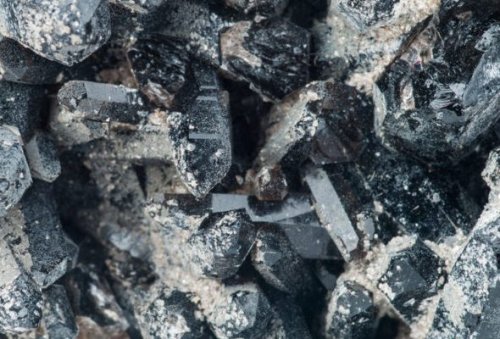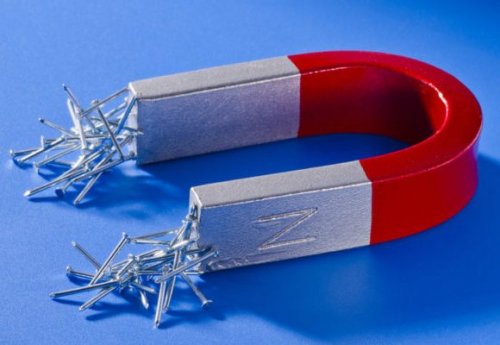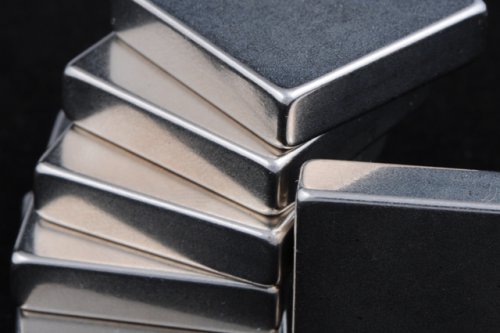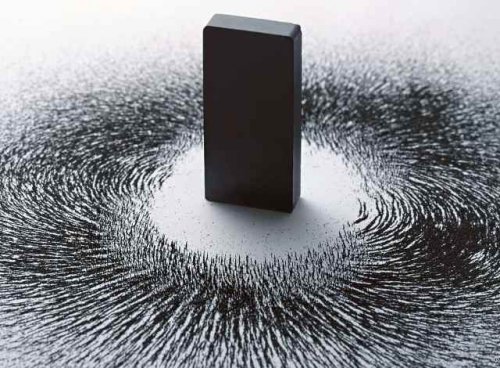What is the difference between artificial and natural magnets?
Permanent magnets are called pieces of iron, steel and some iron ores that have the ability to attract other pieces of the same metals. Pieces of ores that have the properties of magnets are called natural magnets. These properties are most strongly expressed in the magnetic iron ore with the composition FeO + Fe203... Iron pyrite (5FeS + Fe2C3), as well as some nickel and cobalt ores.
Recently, neodymium magnets have become very popular and widespread. For more information on types of permanent magnets see here: Permanent magnets — types and properties, interaction of magnets
Examples of using permanent magnets:The use of permanent magnets in electrical engineering and energy
Artificial magnets are made of special grades of steel, have different shapes and are brought into a magnetic state under the action of an electric current or by touching other magnets.
Every magnet, in addition to the ability to attract non-magnetic iron, also has the ability to attract or repel another magnet.
This phenomenon is easy to observe and investigate if one of the magnets can move completely or partially freely, for example, in the case that the magnet is suspended by a thread or on top, or when it floats on a cork on the surface of water. In this case, it turns out that the pole surface of some magnet, repelled by the pole surface of another magnet, is certainly attracted to the second pole surface of the same magnet.
This fact is usually expressed as follows: there are two types of magnetism, each distributed over one pole face of the magnet. The magnetism of that end of the moving magnet (the so-called magnetic needle), which turns to the north, is called north, sometimes positive, the opposite magnetism - south or negative. These magnetisms act on each other and magnetisms of the same name repel, opposites attract.
If any magnet is divided into two parts, then each part is an independent magnet with two pole surfaces and certainly with both magnetisms. It is impossible to prepare a magnet that has only one pole surface with the same type of magnetism.
Bodies which can be attracted by a magnet become magnetized themselves if the magnet is brought near them or in contact with a magnet, while on that part of the surface of the magnetized body which is nearer to a certain surface of the pole of the magnet or is in contact with it, a magnetism of the opposite appears. this polar surface of the name, and of the parts farther from the magnetizing magnet — the magnetism of the same name.
The attraction of iron to a magnet is explained by the interaction between the opposite magnetisms of the magnet and the magnetized piece of iron. The phenomenon is called magnetization by influence.
The transfer of magnetism from a magnet to a magnetized piece is excluded, because the properties of the magnet and its attractive force are not changed by touching the magnetized piece of iron. In other words, the conduction phenomenon of magnetism, similar to electrical conduction, is never observed. When the magnet is removed, the soft iron loses its magnetism, while the steel is partially retained and becomes a permanent magnet.
All bodies of nature without exception are capable of experiencing a magnetic influence, which is detected in the mechanical action of magnets on them, but in the majority of cases this action is very small and therefore can be detected only with the help of strong electromagnets.

Artificial magnets are all electromagnets that create a magnetic field using a magnetic circuit and a coil with current flowing through it. For more details see here: Electromagnets and their applications




